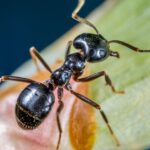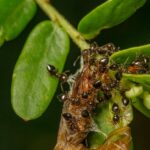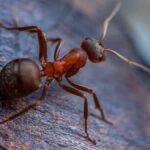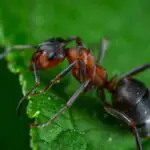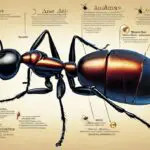Did you know that there’s an ant species with stings so painful they’re called bullet ants?
No? That’s what I thought. You see, there’s just so much to know and discover about ants, especially considering that there are over 14,000 ant species.
That said, it is not uncommon to see small insects and presume that they are ants (probably because of their size and color). But they may be bugs.
“How do you now differentiate them?” you wonder.
Well, telling ants from bugs isn’t so difficult. If you want to know which bugs resemble ants and how to distinguish between them, look no further.
This post will find a list of ants’ look-alike bugs. Not only that, you will discover ways to know which insect is a bug and which is an ant – without mistakes.
Ready? Let’s go.
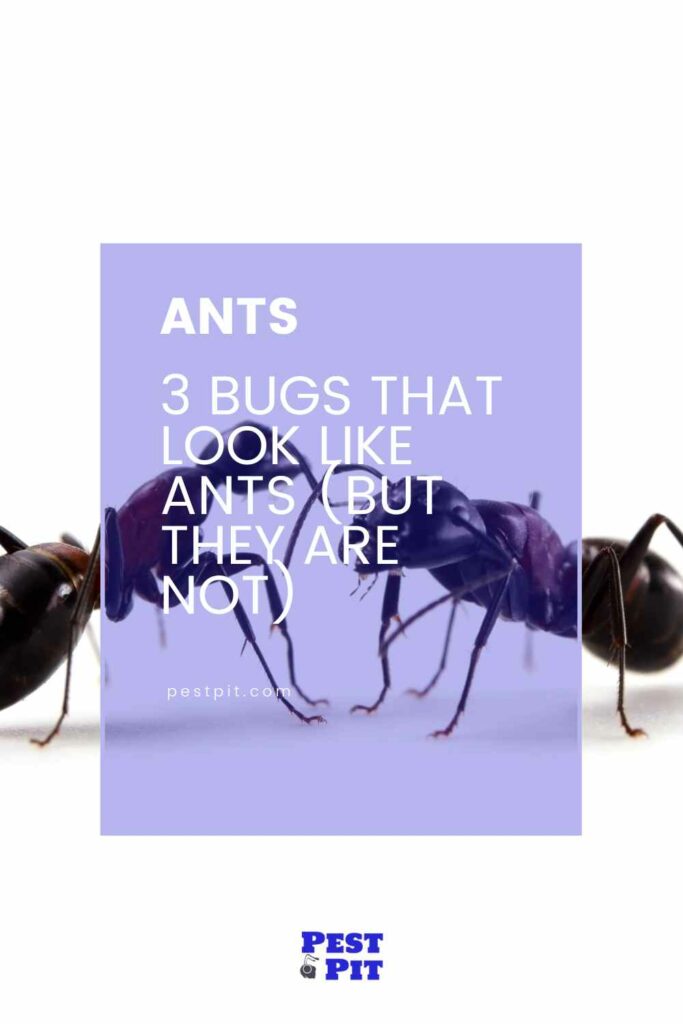
Three bugs that resemble ants but aren’t
The following are bugs that look like ants, but they are not.
Termites
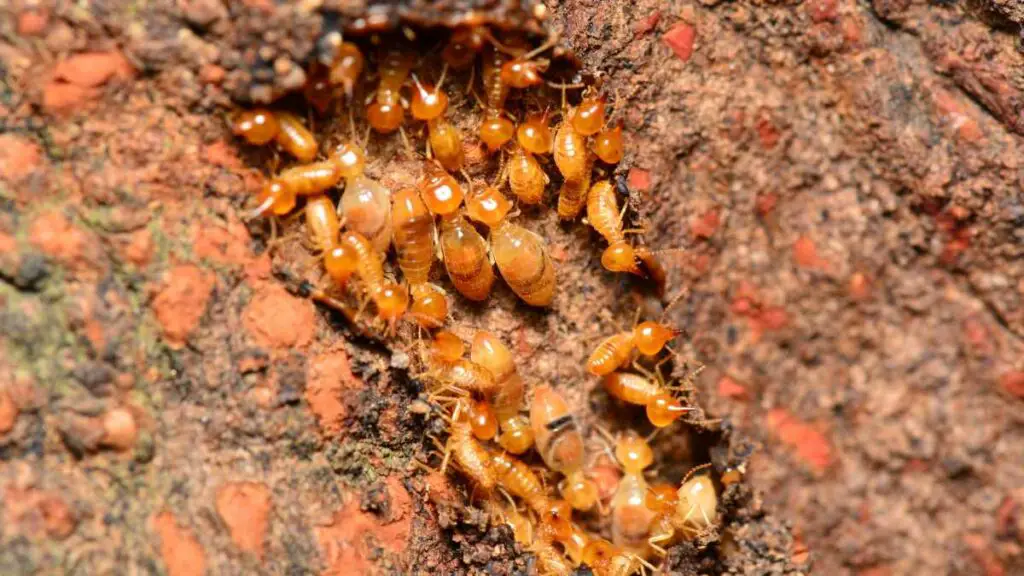
It is no surprise that termites are sometimes mistaken for ants. Because they both have six legs, similar bodies, and antennae, some ant species (flying ants) are also winged and have a similar color to flying termites, but that’s as far as the similarities go.
Termite infestation would cost you more as termites are far more destructive than most ant species; only carpenter ants come close.
How do you differentiate them?
- Ants have longer legs than termites.
- Ant’s body segments are more defined with three separate parts, unlike termites’ straight bodies.
- Ants have long, bowed antennae, compared to termites with short, straight antennae.
Velvet ants
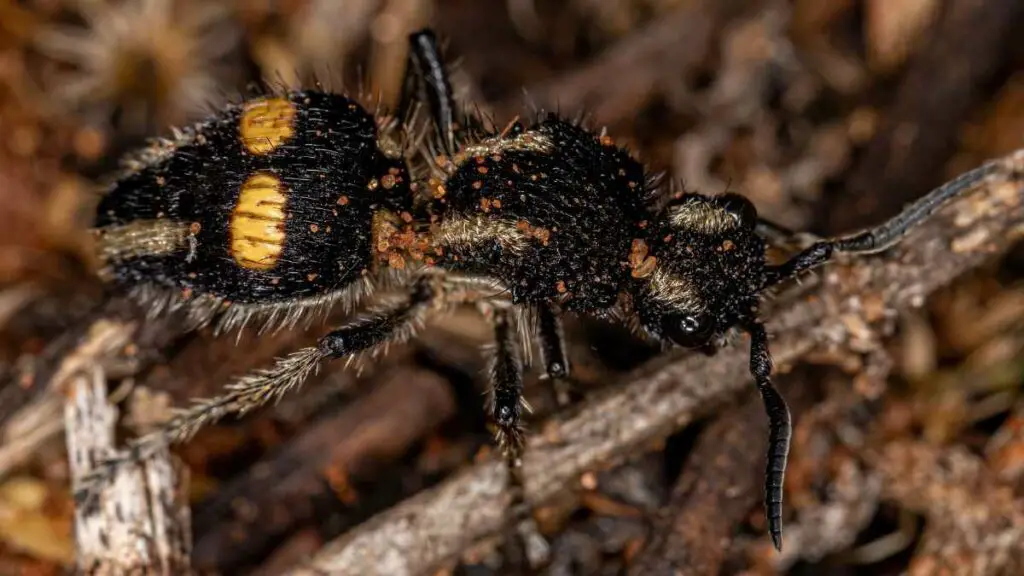
While the name may be misleading, velvet ants are, in fact, wasps, not ants. And you should be careful if you see this one because even though they’re wingless, velvet ants can still deliver a painful sting.
They are often mistaken for ants due to their segmented bodies, six legs, and antennae.
How do you differentiate them?
- Unlike most ants with black or brown color, velvet ants are usually brightly colored (red and black or yellow and brown).
- Velvet ants are covered in furs; ants are not.
- While velvet ants have segmented bodies, their body structure differs slightly from ants’.
Rove beetles
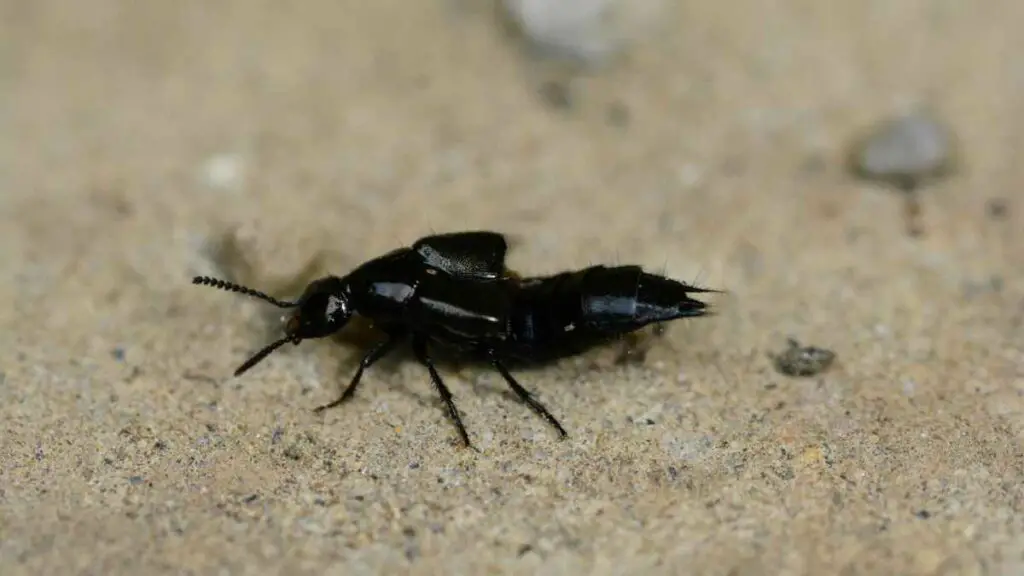
Rove beetles look so much like ants that they fool ants themselves! They not only look like ants but also move and smell like them. These insects infiltrate ant colonies and kill members of the colonies.
Rove beetles have antennae, segmented bodies, six legs, and even the color of ants.
How do you differentiate them?
- Although Rove beetles look very much like ants, there are very slight but noticeable differences between them. Some of these are:
- Ants have bigger heads than Rove beetles.
Their body segments are not clearly defined like that of ants.
Note: You should avoid ALL Rove beetles, regardless of whether they resemble ants. This is because they secrete a powerful toxin that can cause severe skin and eye irritation.
Nine common ant species and their descriptions
Before we mention bugs that look like ants, let’s talk about ants themselves.
Out of all 14,000 ant species, you will likely encounter only nine of them: Argentine ants, black house ants, carpenter ants, fire ants, harvester ants, odorous house ants, Pharaoh’s ants, sugar ants, and thief ants.
Below you have the description of each ant species mentioned above:
Argentine ants (Linepithema humile)
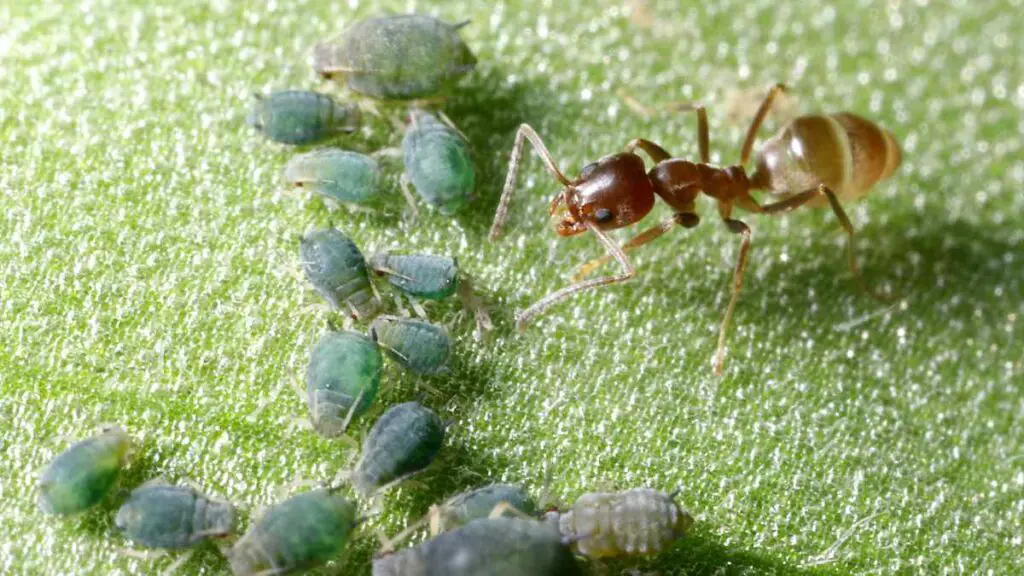
Argentine ant workers are dark brown and about 1.6 mm in length. Like sugar ants, Argentine ants are also sweet-seeking. So, they eat sweet foods and feed on live and dead insects, cereals, damaged fruit, and meat.
Argentine ants do not swarm since they mate in their nest. Also, Argentine ants are somewhat territorial as they have a habit of driving out other ant species from an area and overtaking it.
Black house ants (Ochetellus)
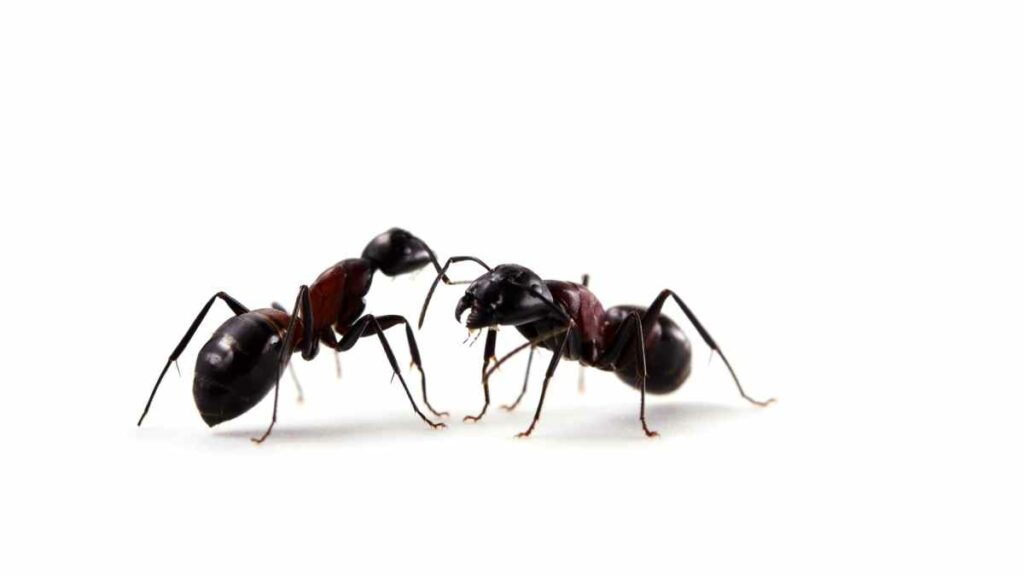
Black house ants usually have a shiny and black appearance and are 2.5 mm to 3 mm long. They are also attracted to sugary foods but don’t mind feeding on meat products and grease.
Adult black house ants have three defined body sections: head, thorax, and abdomen. Moreover, they can spread Salmonella disease due to their scavenging nature.
Carpenter ants (Camponotus pennsylvanicus)
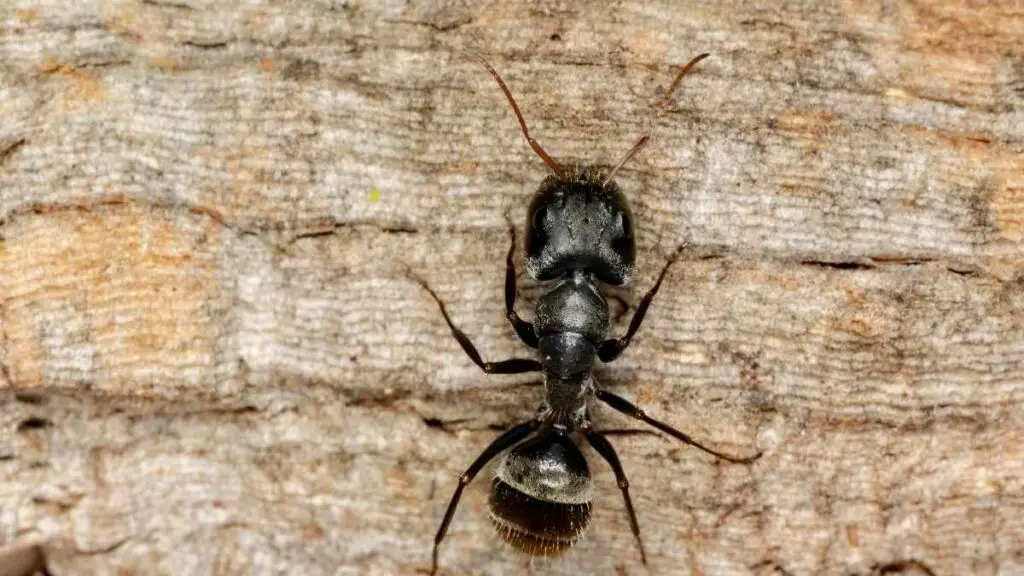
While carpenter ant workers are usually around 0.25 inches long, the queen carpenter ant is about 0.5 inches. The most common carpenter ants are black, yet some are black and red. And there are winged carpenter ants (reproductive ants) as well.
They are mostly found in wood dampened by water leaks. But, occasionally, you can find them in dry wood as well. Carpenter ants make their nests (also called galleries) in woods by excavating them or hollowing out sections of trees (just like carpenter bees)
While their names may suggest it, carpenter ants do not eat wood. Instead, they feed on fats, grease, meat, sweet substances, and even dead insects.
Red imported fire ants (Solenopsis Invicta Buren)

Fire ants are coppery-brown on the head and body, but their abdomen is darker. The fire ant queen is 0.63 inches long, while the fire ant workers range between 0.125 to 0.25 inches.
Fire ants’ menu is quite comprehensive. They feed on dead animals, insects, and earthworms and collect honeydew and other sweet food.
Fire ants do not bite, but they have a painful sting which they use when aggravated.
Harvester ants (Pogonomyrmex spp.)
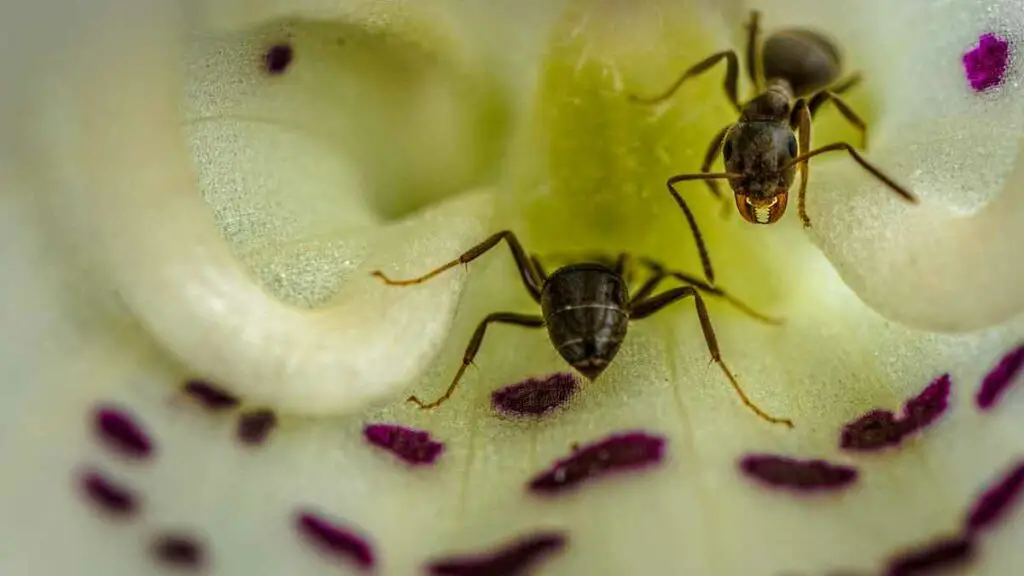
Harvester ants have orange to reddish, brown to brownish black, reddish to dark colors, and long hair under the chin.
Harvester ants particularly enjoy feeding various grass seeds. Their nests are usually around ten to fifteen feet deep. However, you need not worry about this one much; they don’t invade homes.
Odorous house ants (Tapinoma sessile)

Odorous house ants get their names from the strong rotten coconut smell they release when squashed. They are either black or brown.
The length of an adult odorous house ant ranges from 0.0625 inches to 0.125 inches. An odorous house ant colony can have up to 100,000 members!
As the name implies, odorous house ants are commonly found in/around houses. You can see them in your kitchens, bathrooms, cupboards, or anywhere food crumbs are found.
Asides from sugary substances, they also feed on dead insects. And unless you remove their nests, they can infest your house again and again.
Pharaoh’s ants (Monomorium pharaonis)
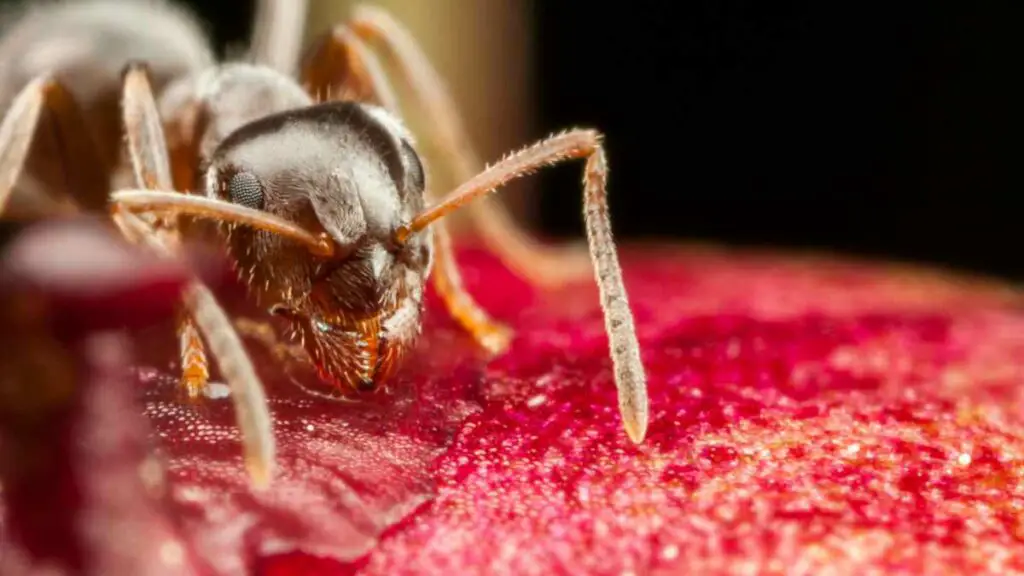
Pharaoh’s ant workers are between 1.5 to 2 mm long and have yellow-brown bodies with a brown abdomens. The males have wings and are a bit bigger (3mm).
On the other hand, the queen is dark red, has wings, and is way bigger than workers and males (3.5 – 6 mm). Their diet primarily consists of protein foods like meat, fats, dead insects, etc.
The Pharaoh’s ant queen can produce up to 3,500 eggs in its lifetime.
Sugar ants (Camponotus consobrinus)
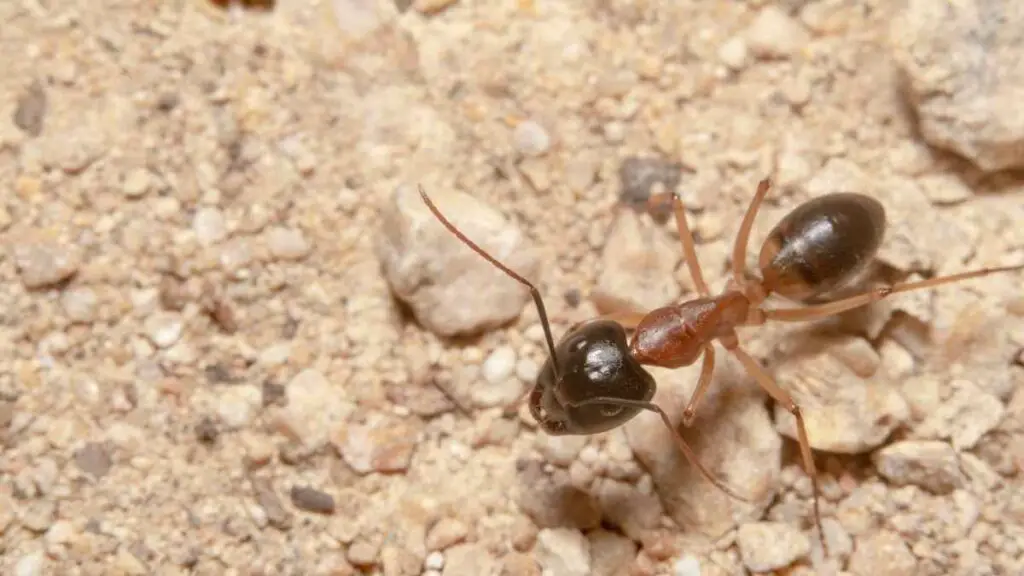
Generally, sugar ants range from 0.0625 to 0.5 inches in length. Female sugar ants are orange, while males are black and have wings. Although sugar ants cannot sting, larger sugar ant species can deliver painful bites.
The sugar ant’s name comes from its attraction to sugary foods. Sugar ants are attracted to moisture; hence you are likely to find them in your bathroom or kitchen sink.
Sugar ants and carpenter ants are very similar, so just make sure you identify the right one!
Thief ants (Solenopsis molesta)
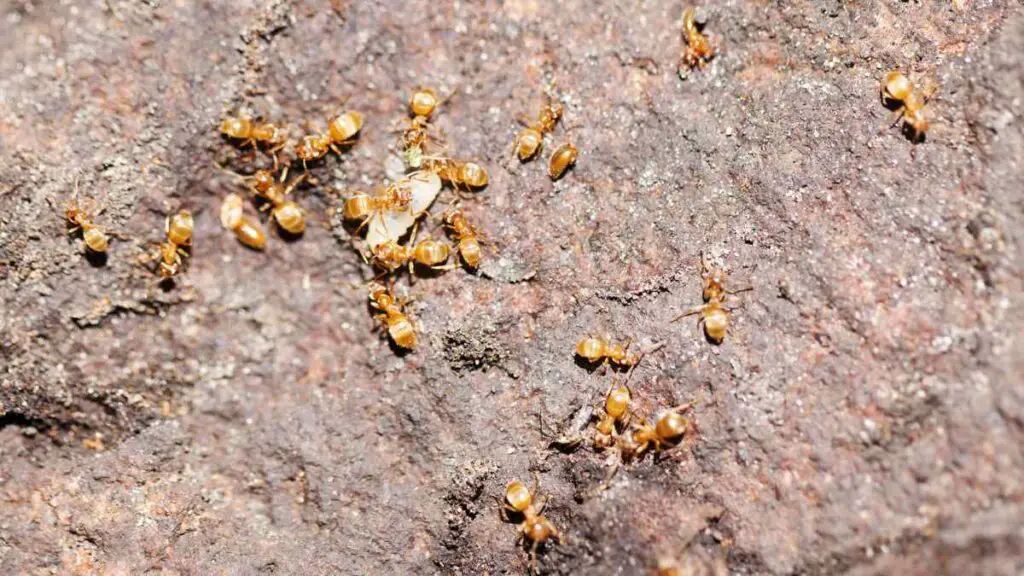
The thief ant’s appearance varies from brown to pale yellow. Because of their small size, they make their nests in very small cavities.
Their diet consists of meats, bread, fruits, oils, and nuts. Yet, thief ants will feed on sweets readily.
Conclusion
There you have it; those are the bugs that look like ants but are not. So, the next time you see a bug or an insect that you’re almost convinced that it’s an ant, do well to double-check.
You may be surprised that it’s a less harmful insect or a far more sinister bug.
Good luck!


